This piece summarizes the key aspects of the system ontology proposed in Ch. 3 of Systems Science: Theory, Analysis, Modeling, and Design (Mobus, 2022).
The Purpose of a System Ontology
Ontology is the philosophical study of what exists. It identifies the names and categories of things found in reality. Ontology is not concerned with your specific pet dog. It is interested in defining the general category of "dogness," the qualities that all dogs share.
Ontology in the information sciences is defined as the "set of terms naming what exists in a domain of interest." For example in medical science, this would include the names of all known diseases. Developing a system ontology gives us a framework for understanding "systemness." It gives us a sense of what exactly makes a system a system.
This system ontology allows us to develop a common language of systems that can facilitate translation of terms in one domain to another domain. The language of systems is a key aspect of a formal methodology for acquiring knowledge of how any type of system works.
Summarizing the Ontology
Each node in the diagram below, which is taken from the textbook, represents a specific element in the system ontology. Each element fits into one of four roles: teleonomy, identity, characteristics, and composition.
The system hierarchy is divided into three different levels: the environment (-1), the system of interest (0), and the system's composition (+1).
Each of these roles, levels, and elements are explained below. In order to make concepts that may seem abstract a bit more tangible, the ontology is applied to three concrete examples: The Ethereum blockchain, The U.S. Federal Reserve, and the human brain.
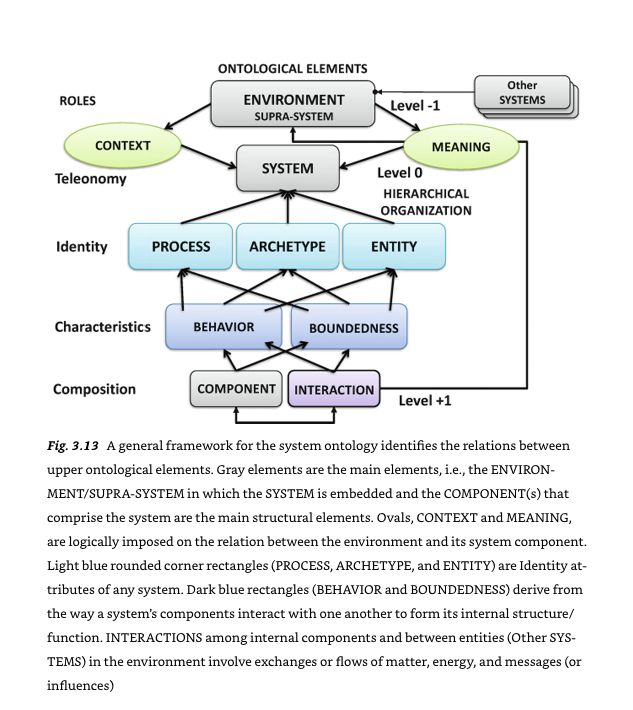
Level -1: Environment
At the top layer of the ontological framework we deal with elements related to the system's teleonomy, or purpose. Teleonomy refers to interactions between the environment and the system of interest (SOI.)
The environment is a supra-system enclosing the system of interest. It gives context and meaning to the SOI. The environment contains all sources of inputs to the system and all sinks for outputs from the system. Inputs/outputs consist of matter, energy, or messages. The environment also contains all channels through which flows between systems occur.
System is the root category. The SOI is the entity we want to understand.
Context is the set of conditions that are relevant to the dynamics of the SOI at a specific moment in time.
Meaning is a set of conditions with an affective influence on a system. The conditions can have a positive, negative, or neutral impact on the system and induce the system to act in certain ways.
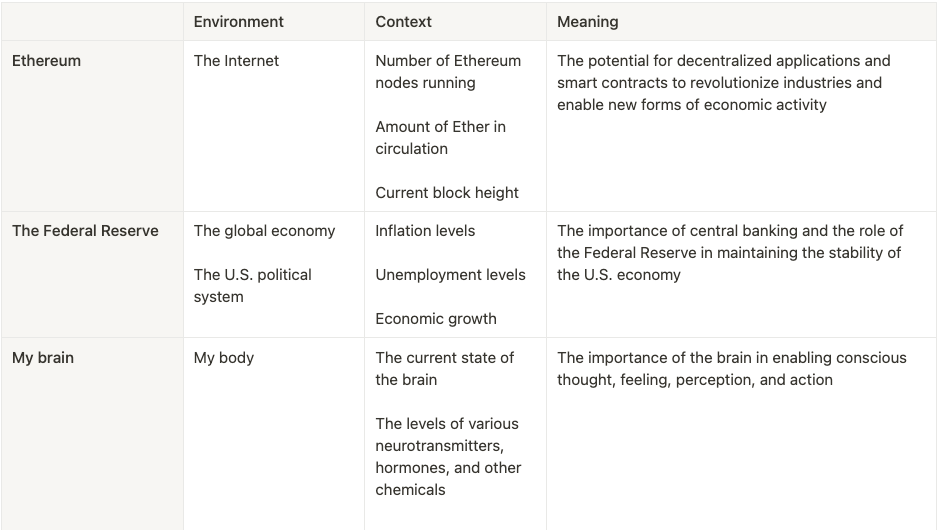
Level 0: System of Interest
At the center of the ontological framework we deal with elements related to the system's identity and the system's characteristics.
All systems can be identified as either a process, an archetype, or an entity.
- A process is a system that performs transformations on inputs to produce changed outputs.
- Archetype refers to a general and abstract category or type of object.
- An entity is a concrete system that does something and has causal effects on other entities or objects in the environment.
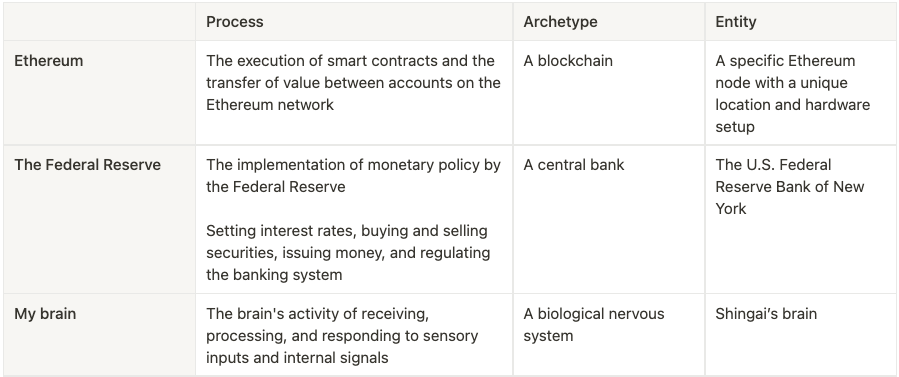
All systems can be characterized by their behavior and by their boundaries.
Behavior is the activity that a system displays on some time scale. It is the changes in space and composition a system undergoes overtime in response to interventions, forces, or chemical interactions.
Boundaries are what hold a system’s components together and separate a system from its environment. They can be physical, like a cell membrane. They can also be invisible, like a gravitational field. A church congregation is bounded by fellowship and shared beliefs, psychological forces that maintain it as a system. All systems have boundaries that help them maintain systemhood.
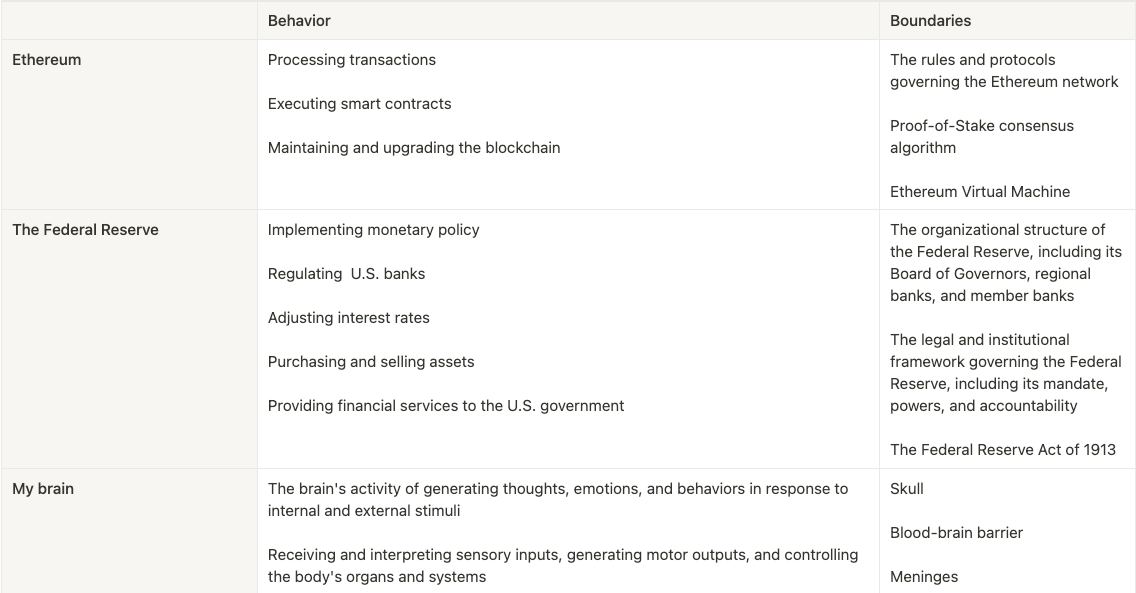
Level +1: Components
At the bottom layer of the ontological framework we deal with elements related to the system's composition. What the system is made up of.
All systems have components and interactions.
Components are the parts of a system that behave to produce the process that the system entails. All objects within a system’s boundary are components of the system. Components can be systems. Components can also be atomic and irreducible.
An interaction is a type of relation between systems. All systems interact with other systems, none are isolated. Interactions between a system’s internal components are characterized as flows of substances, through channels or broadcast as fields. Interactions occur because the component receiving a flow is affected by it.
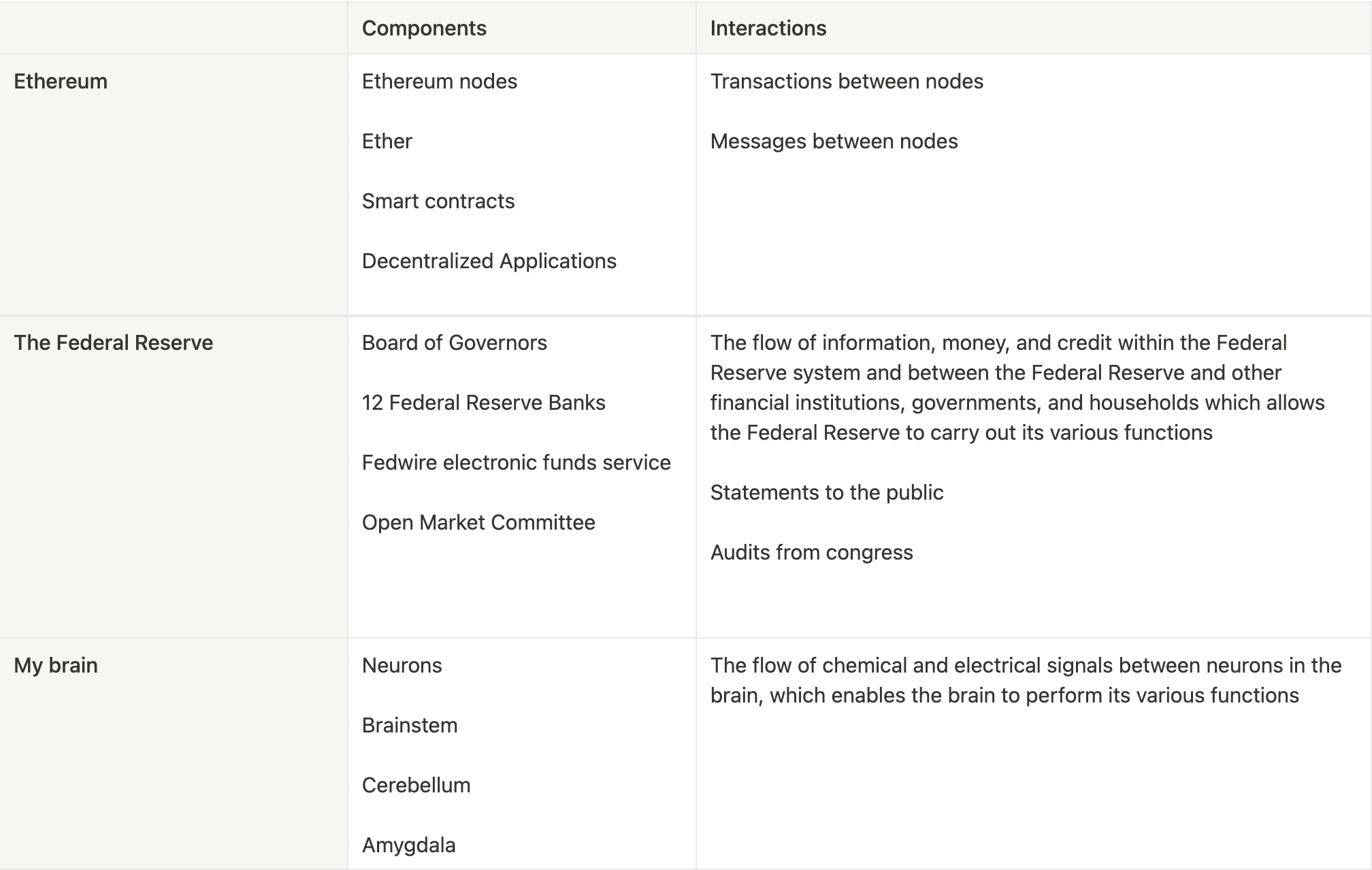
Assessing the Ontology
The ontology is easy to grasp, and the graphical depiction of the elements is helpful. I appreciate the fact that it clearly can be applied to the understanding of any type of system–technological, social, biological, or other.
I've only been seriously studying systems science for about half a year now. Diving into the ontology has helped me gain a better understanding of what would be necessary to develop a formal and unified general science of systems.
The twelve principles of systems science, first introduced in Principles of Systems Science and later reviewed in Ch.2 of Systems Science: Theory, Analysis, Modeling, and Design, helped me understand what basic things are true about all systems. This ontology takes the next step in demonstrating what exists in all types of systems.
I'm excited to see how these basic building blocks are used in the following chapters to create the formal methodology for gaining deep understanding of all systems.
I haven't spent any time studying ontologies so I'm not in a position to deeply critique it or assess how it could be improved. There are some minor inconsistencies in terminology that can be a bit confusing. Archetypes in the diagram are "objects" in the text. Identity elements in the diagram are "qualities" in the text. Characteristics in the diagram are "attributes" in the text.
Aside from this issue, the framework is logically consistent. It is a solid foundation for building a formal language of systems.
